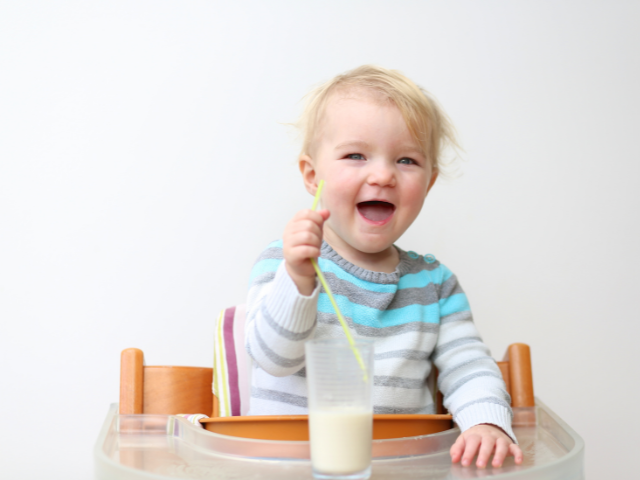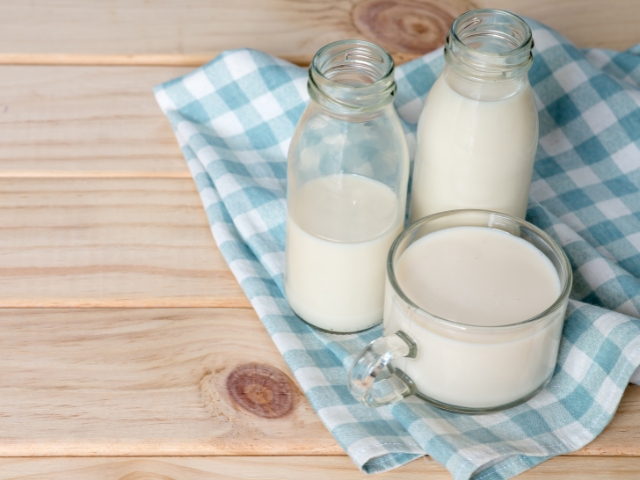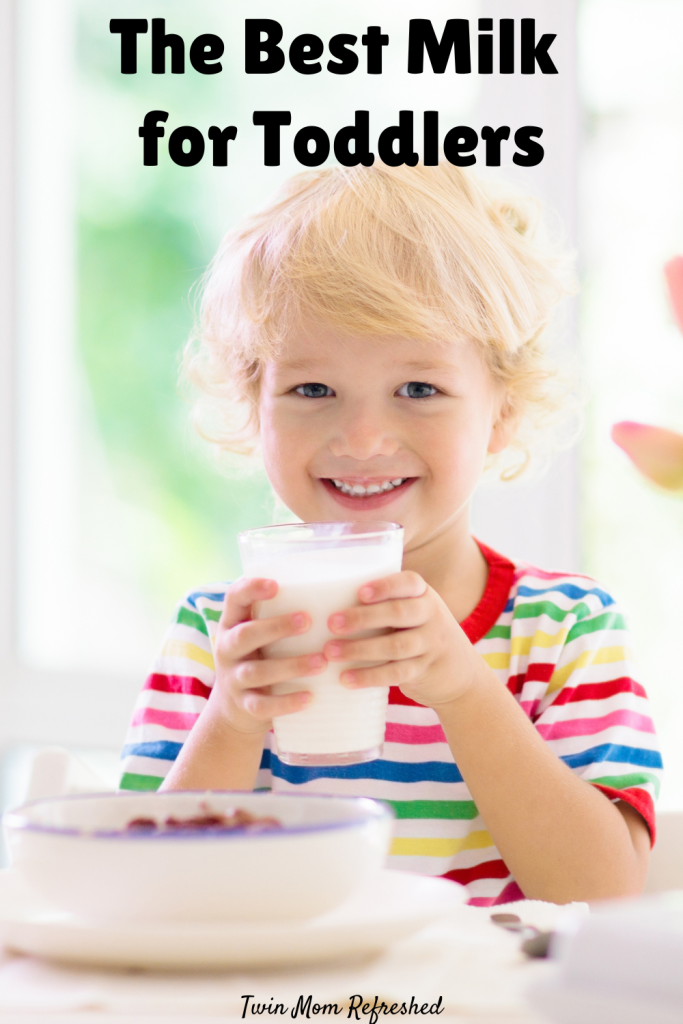
Sharing is caring!
Wondering what the best milk for toddlers is? Then you’re in the right place.
Simply put, a good option for toddlers is whole milk. However, you may also be looking for milk alternatives for toddlers with allergies or sensitivities, or your family simply doesn’t eat dairy.
Milk provides calcium, vitamin D, protein, vitamin A, potassium, B vitamins and zinc―all essential for healthy growth and development for toddlers.
Whole milk in particular is important for toddlers because it provides the dietary fats necessary for brain development (source).
I’ve tried many alternatives to milk with my oldest child. He had a milk protein allergy when he was an infant so he drank milk alternatives up until he was 3. I ate a non-dairy diet for 2 years while breastfeeding. Then he outgrew the sensitivity. If you suspect your infant or toddler has a milk allergy or sensitivity it’s best to talk to your pediatrician about it.
There are many other foods available for fat and protein that your child can eat besides drinking milk.
When can toddlers start drinking milk?
When toddlers turn 12 months old, they can start drinking cows milk.
Before toddlers turn 1, cows milk is too hard on a babies digestive system. I gradually introduced cows milk to my toddlers when they were 1 year old. I still fed both formula and cows milk for a few months to get them used to drinking cows milk.
Always speak to your child’s pediatrician before introducing milk.
How Much Milk Does A 12 month old need?
According to the AAP (American Academy of Pediatrics), they recommend toddlers ages 12 to 24 months consume 2–3 cups (16–24 ounces) of whole milk per day.
Kids ages 2 to 5 years should drink 2–2.5 cups (16–20 ounces) per day.
Toddlers can also consume other dairy products such as cheese, kefir, yogurt, and cottage cheese for the 2-3 cups if they don’t prefer drinking milk. I buy full-fat yogurt, cheese, kefir, and cottage cheese for my toddlers.
Toddlers drinking too much milk may not get the nutrients they need from other foods because they are filling up on milk.
However, if your toddler won’t drink milk, you can add milk into smoothies, or offer them yogurt or cheese and see if they prefer that better than drinking cows milk.
Wondering what sippy cup or open cup is best for milk and water? Here’s a list of top-rated sippy cups for babies and toddlers.

Best Milk For Toddlers
There are many types of cow’s milk on the market from grass-fed, organic, milk with added DHA, and A2 milk.
With so many types of milk available at the grocery store, the choices can be overwhelming.
Grass-fed cows milk comes from cows that eat grass. This milk is higher in beneficial fatty acids and lower in Omega-6. It’s what cows are meant to eat! Grass-fed is a good option, however, it tends to be the most expensive and may not be accessible everywhere.
Organic milk is milk that doesn’t have added pesticides to the food the cows eat. They also eat at least a 30% grass diet. Organic milk also tends to be more expensive.
DHA Benefits in Whole Milk
Some milk has DHA added to it. Horizon milk and comparable brands have Omega-3s added into them for brain development. Typically fatty fish and fish oil are a good source of omega 3. If you’re toddler doesn’t get many Omega 3s from their diet, this may be a good choice.
I usually try to alternate between grass-fed, organic, and regular milk since I have a lot of kids that drink milk. I buy grass fed milk and organic milk when it goes on sale. Usually, stores have a clearance section for dairy that expires soon and you can find it there.
Related: Toddler Breakfast Ideas

Related: Dinner Ideas for Toddlers
Milk Alternatives For Toddlers
Non dairy milk alternatives for toddlers include Pea Milk Protein, Soy Milk, Flax Milk, Hemp Milk, and Oat Milk.
There are other non dairy milk for toddlers such as almond milk, coconut milk, and rice milk, but they offer hardly any protein compared to other milks. They are still good options to add to smoothies or to give to toddlers once in awhile.
Soy Milk For Toddlers and Pea Milk For Toddlers
Soy milk for toddlers is may be a good option for you. Soy milk contains comparable protein compared to cow’s milk. Some people worry about having too much soy. I prefer to buy organic non-GMO soy and also drink/eat it in moderation.
Pea Milk also contains a good amount of protein comparable to cows milk. Ripple Milk, a pea protein milk has added omega 3s from algae oil in it.
Almond Milk For Toddlers
Almond milk is a popular alternative to cows milk, however, it does not have comparable protein so this may not be the best choice to sub cows milk for toddlers and young kids. I add almond milk into smoothies and give it to my toddlers on occasion.
Oat Milk For Toddlers
Oat milk for toddlers can be a good choice for kids who are sensitive to dairy or have a dairy allergy. However, the protein content is much less in oat milk compared to dairy milk, but higher than rice milk and almond milk.
There are many options of milk on the market these days. Always speak to your child’s pediatrician about what is the best option for them.
Related: Which Yogurt is best for Babies?

About The Author
AMY
Related Posts
Healthy Carrot Muffins for Toddlers
These healthy carrot muffins for toddlers and kids are moist and are loaded with carrots…
January 4, 2022Sippy Cups For Toddlers
From glass sippy cups to stainless steel sippy cups, you may be wondering what are…
September 27, 2021

